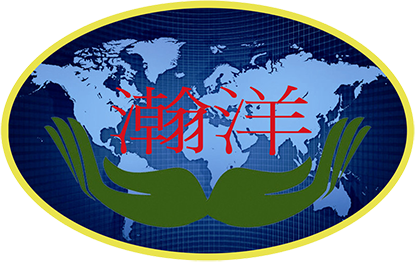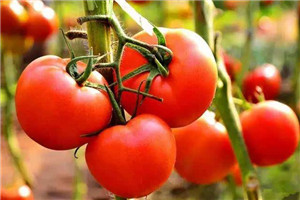Tomato late blight is one of the important diseases on tomato production vegetable greenhouses tomato late blight fungus mainly mycelium wintering in the sick body, pathogen infection in suitable environment conditions, and the disease spot produce sporangium, spread by wind and rain, in case of moisture is rapidly germination and invasion of blade, the blade, bottom-up development form the center of the typical strain.The sporangium produced on the leaf of the central plant was spread by airflow to the surrounding plants for re-infection.The occurrence and prevalence of late blight are closely related to climatic conditions, and the development speed is also closely related to tomato cultivation conditions and plant resistance.
Agricultural prevention and control
1. There is a certain difference in disease resistance between different tomato varieties, and disease-resistant varieties should be given priority in cultivation.In addition, appropriate selection should be made according to the adaptability of stubble or region. For open field cultivation, special varieties for open field should be selected; for early-maturing cultivation, late-maturing varieties should not be selected; for humid areas or rain-prone areas, high-resistance varieties should be selected.
2. Cultivation and disease prevention. Reasonable cultivation techniques are indispensable agronomic measures in the prevention and control of diseases and insect pests.According to the fact that late blight is most likely to occur in high humidity, the following measures should be taken:
(1) seed processing: prevention and treatment of disease from every detail, the seed is a key point of disinfection.First seeds with 70% mancozeb wettable powder 500 times liquid spraying, and then on 55 ℃ soaked in water for 30 minutes, is sprouting after waterlogging caused by excessive rainfall.
(2) mulching cultivation: tomato mulching cultivation can ensure that the soil temperature and moisture, reduce the air humidity, to create conditions conducive to tomato growth, not conducive to the invasion of bacteria, reduce the incidence of disease, and to achieve the goal of disease prevention.
(3) reasonable density: according to the different varieties of different soil fertility, plant a total of 2000-2400 per acre, ensure the plant under the condition of ventilation pervious to light is good, healthy growth, enhance the resistance, if improperly planting density is too high, between plant, stem, leaf, fruit, and will honor each other, water, fat, grow weaker, air humidity is big, bacteria to invade, susceptible to disease is popular.But density is too small, although grow robustness, air humidity is small, disease-resistant effect is good, but cannot achieve the total output that needs again.In a word, the density of infinite growth type should be small, while that of finite growth type should be large.
(4) fertilizer and water management: tomato life from seedling transplanting to the flowering period, the soil moisture is required to gradually increase from 60% to 85%, namely 60% of the seedling period, 70% of the flowering period, 80% of the initial results, 85% of the flowering period.As the saying goes, “it is the water that makes the harvest; it is the fertilizer that makes the harvest”. Proper watering is crucial to ensure the coordination between nutritional growth and reproductive growth, so as to enhance the disease resistance.Fertilizer is key factor of production, planting tomatoes plots of land, must be at least moderate fertility, soil preparation quality demanding, loose soil, fertilizers, shi (1000-3000 kilograms per mu of high-quality farmyard manure), P fertilizer 50 kg/mu, K fertilizer 20 kg/mu, in addition to supply sufficient N fertilizer, P, K fertilizer on yield and quality is important, only the reasonable collocation of the three key elements use, enhance plant disease resistance, reduce late blight plague bacteria invasion, to maximize the good yield.On the contrary, the maladjustment of N, P and K reduced the resistance of tomato, and late blight was easy to spread, affecting the yield and quality.
(5) light and heat conditions: tomato is a photophilic crops, planting plots must be dangyang, otherwise the tomato growth thin and weak, germs easy to invade, cause disease.Tomatoes grow the most adaptive temperature 20 to 25 ℃, my county tomato planting area has the advantageous resources of field, annual average temperature in 21 ℃, but in the rainy season, the winter frost, mist, air humidity is big, good for germs invade the harm, then if not control in time, late blight happen spread quickly, should be timely prevention and control of spraying.
6 leaves picked a fork: late blight in rainy, high humidity, low temperature, mist, foggy in the morning and evening is the most easy to popular, such as relative humidity above 75%, the temperature between 15 and 25 ℃ are popular.In order to change the microclimate in the field and reduce the air humidity, the lower foot leaves and redundant dense branches of the plant must be removed to ensure good ventilation and light transmission in the field, so as to destroy the living environment of the bacteria and thus inhibit the occurrence of disease.
7 crop rotation: continuous cropping of solanaceae crops, soil with large amount of bacteria, easy to come on, because the disease residues left in the cultivation field is the source of winter infection at the beginning, so when pulling seedlings not only need to clear the ground disease leaves, fruit, and in order to avoid the accumulation of bacteria lead to a sudden big occurrence, should take 2-3 rotation with non-solanaceae vegetables.
Physical prevention and control
Physical control is the use of physical methods, such as seeds for wind screening, screening, water separation, mud water separation and other methods to select good seeds;Or use the physical method such as soaking seeds in warm soup to inhibit the growth and development of bacteria so as to achieve the purpose of disease prevention.Field sanitation is mainly to remove the stems, leaves, fruits and other residues in the field with diseases, and burn them down or bury them deep, so as to reduce the amount of soil bacteria as much as possible and reduce the chance of pathogen infection, so as to prevent diseases and increase incomes.
Chemical control
Tomato disease occurred in different periods and seasons of cultivation in our county.Therefore, after agricultural control and physical control, symptoms of the disease still appear, which requires the use of chemical control means, chemical pesticides for auxiliary control.The main purposes of chemical control are: prevention and control of bacterial invasion;Kill germs;Inhibition of bacterial growth and development, enhance tomato immunity.
1. Soil treatment: tomato likes neutral environment, acid soil, alkaline soil can be improved by using quicklime.Soil bacteria is a major threat to tomato production in our county, in addition to do a good job in seedbed ground disinfection, can also be applied to the field of broad-spectrum fungicide disinfection, reduce the pathogens in the soil (available bacterin or zinc and other pesticides).
2, seedling and harvest: after engraftment of late blight symptoms of leaf, stem, fruit, first artificial keep clear of in time, available 58% armor frost, manganese zinc wettable powder 500 times liquid spray, spray must be uniform, thoughtful, especially flowering until the mid result is critical, during the early and late development should be carefully check the late blight and organization control in time, once popular, will has a great influence on yield and quality.If the central disease strains are found in the field, the following methods and agents can be selected: spray method, spraying 72.2% pomelo hydrochloride solution 800 times in the early stage of tomato disease, or 72% frost urea • manganese zinc wettable powder 400-600 times, or 64% frost • manganese zinc wettable powder 500 times, spray once every 7-10 days, continuous control 4-5 days.If the humidity in the shed is too high or meets cloudy days, powder spraying method can be used, such as the use of Gerry micro powder 1 (50% alkyl morpholine wettable powder) powder spraying control, can achieve better control effect.Stem disease spot can be applied with a high concentration of liquid medicine, whether it is leaf spray or stem coating medicine, once every 7-8 days, 2-3 times in a row, but pay attention to 10 days after the application of fruit can not be picked on the market.
Post time: Apr-03-2019

